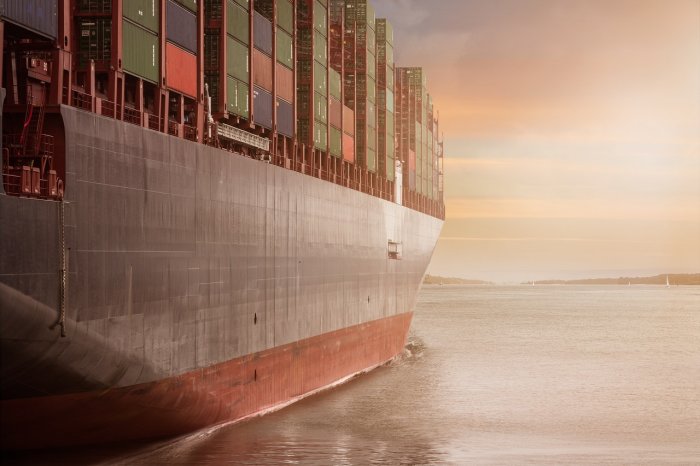
Over the years, the global e-commerce industry has grown exponentially. Data from Statistica revealed that it is expected to become an even bigger sector by 2021. Its predicted growth is pegged at 246 percent – from $1.3 trillion to $4.5 trillion – between 2014 and 2021.
With this growth comes even greater competition for businesses. However, it also means there will be an increase in the number of shoppers taking advantage of the innovations in the trade that continue to break down geographic borders.
If you’re running a small or medium-sized enterprise, it’s a great time to consider expanding your reach through e-commerce. Aside from the additional revenue, you stand to gain from it, you would also be able to ensure that your business grows as your chosen market develops.
However, there is one major challenge you must tackle in this endeavor: shipping costs. Based on a survey conducted by the International Post Corporation (IPC) in 2017, 62 percent of international buyers expect free shipping when they purchase online. This is in spite of higher shipping costs and unpredictable border challenges that incur.
Meeting such enormous expectations and staying in business can be challenging, but it’s not impossible. To manage your logistics better, below are three things you must remember to help your business thrive in the global scene:
1. Understand Packing and Labeling Rules
Whether you’re shipping directly to your customers or to a warehouse overseas, problem-free international freight requires a thorough understanding of packaging and labeling guidelines set by each country. This will help prevent any delays in the arrival of the shipment caused by negligence and disobedience of these shipping regulations.
Understand local rules and regulations to ensure that your goods get where they need to be on time and without issue.
If you’re using a freight forwarder in the United States to transport goods, remember to do some research on how SMEs should pack and label their products. This may vary depending on several factors, including:
- The type of product to be transported
- The origin country’s regulations
- The destination country’s rules
Aside from preventing delays, proper packaging and labeling of your cargo would also help reduce the chances of damage during transport. It will also ensure that the package arrives in the right place, which can help prevent extra costs of redirecting the shipment.
Here are some general packing guidelines that may apply to almost every situation:
- Use sturdy packing supplies for your international shipments. Use new boxes or reusable poly-mailers.
- Make sure that the items are protected prior to shipping. This means breakables must be packed with added cushioning such as foam rolls, bubble wrap, packing peanuts, and the like.
- Don’t skimp on insurance. Declare the actual value of property to maximize insurance.

2. Know the Destination Country’s Regulations on Your Product
One crucial aspect that separates international shipping from its domestic counterpart is the destination. While domestic freight is only covered by a single set of rules, overseas shipments should follow both the origin country’s and destination country’s shipping regulations.
For example, some items that go through regular shipping to the United States may not be easily imported in other countries. This may include fruits, vegetables, cigarettes, mobile phones, medical devices, jewelry, and even nail polish. These items need extra documentation and, in some cases, cannot be shipped at all in some countries.
3. Test Your Global Marketability with One to Two Countries
Most SME owners fear to enter the e-commerce industry because they think it’s an all-or-nothing kind of a deal. It isn’t.
In fact, smart entrepreneurs do not promise to ship anywhere on the planet from the get-go (that may not be possible even for big companies). Instead, they start small and only offer their products in one or two territories. From there, gradually expand your reach to nearby countries.
Keep in mind that, when choosing a country to ship to, you should first consider where your website gets the most traffic from. It will also help if you know the language of the nation you’re going to ship to.
4. Determine All the Costs (and Try to Reduce These)
The cost of shipping overseas is a primary consideration that SMEs who wish to venture into e-commerce should think about. Since you will start dealing with cross-border purchases, you would need to think about how you can manage the duties, taxes, and sky-high freight costs.
Since these costs are usually added to the net price of a product upon checkout, these can cause your customers to think twice about proceeding to buy your product. High duties, taxes, and shipping costs are considered the most prevalent reasons for cart abandonment in e-commerce.
One way you can deal with this challenge is to have the carriers automatically calculate the entire cost of the shipment – from the packing and labeling to the customs taxes. This so-called landed cost should then be immediately visible on your online shopping website for your customers to see.
Aside from managing their expectations, you can also try to ease the burden of international shipping costs from your customers by experimenting on a flat rate for shipping costs.
Offering free shipping for a minimum value or number of items purchased could also be helpful in managing costs. It can even serve as a promotional strategy to draw more customers to your e-commerce site.
The Takeaway
Cross-border shipping is a major challenge for entrepreneurs who wish to reach more customers around the world. Arming yourself with the knowledge of the intricacies of the trade will bring your business one step closer to thriving in the global market.
Author-Bio
Paul Rehmet is the Chief Product Officer for Shipa Freight. He is responsible for translating the company’s vision into an easy-to-use online freight platform for its customers. In his 25-year career, Paul has held various technology leadership positions with early-stage startups and Fortune 500 companies including Unisys, Destiny Web Solutions, and US Airways.

